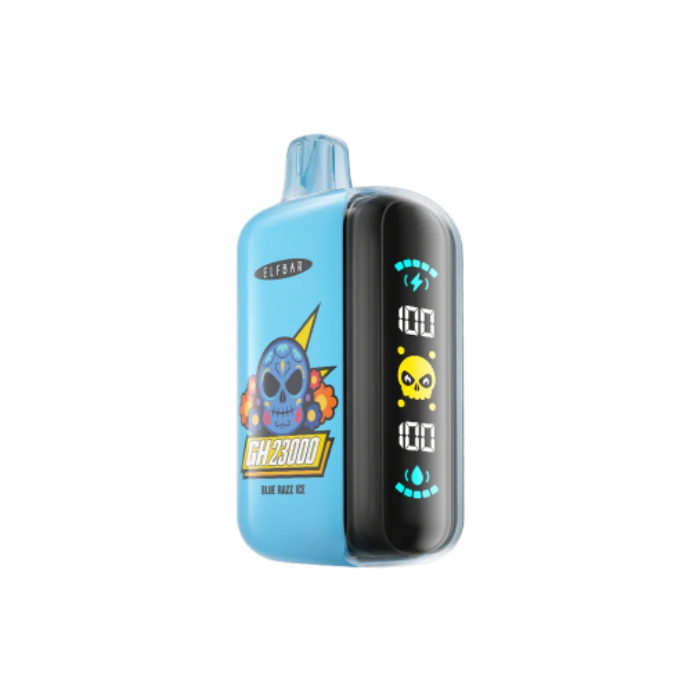Cigarettes, Health
How Much Nicotine is in a Cigarette?
The pleasure of smoking a cigarette can be unmatched, especially for those who are already used to using these tobacco products for a long time. In every puff, your senses feel relaxed, allowing you to think and concentrate clearly as you go on with your day. Additionally, you may feel a sense of relief every time you smoke a cigarette, alleviating your anxiety and stress even for a short time.
You may be wondering why cigarette smoking gives such sensations whenever you do it. The only thing that makes cigarettes soothing is the nicotine content they possess.
But how much nicotine is really in a cigarette? This informative blog gives you an insight into how much nicotine is in a single cigarette and the nicotine levels you can expect when you purchase a pack of cigarettes. Read more to find out here at NativeSmokes4Less.
How Much MG of Nicotine in a Cigarette?
As we all know, cigarettes contain tobacco, which is the main source of nicotine for these tobacco products. This key ingredient works alongside additives and flavourings, if there are any, to make sure your smoking experience will be satisfying. They essentially help cigarettes deliver lower tar content, which is known to be harmful when inhaled regularly. Additionally, cigarettes also contain other harmful chemicals such as carbon monoxide and formaldehyde, which can have serious health consequences with prolonged use. Despite various efforts to promote the dangers of smoking, cigarettes continue to be a leading cause of preventable diseases and premature death worldwide. It’s important to be aware of the risks associated with smoking and to consider healthier alternatives to satisfy nicotine cravings.
To further block bad chemicals in cigarette smoke, a filter is added to every cigarette. When you smoke, you don’t have to worry about absorbing all harmful substances from the cigarette. Additionally, the smoke from the cigarette becomes milder on your throat through the filter.
Going back to tobacco, it naturally produces nicotine whenever you light the cigarette up. This addictive substance then reaches your body through your lungs until it moves toward your brain. It then activates hormones and neurotransmitters that generate a wide variety of effects on your body as a whole.
Now, nicotine can mimic a neurotransmitter known as acetylcholine when absorbed into your body. It then triggers an increase in signalling activity in your brain, which leads to a heightened sense of energy whenever you smoke cigarettes.
Over time, the neurons in your brain compensate for the increased activity by producing fewer acetylcholine receptors. Consequently, when you stop smoking cigarettes and your nicotine levels decrease, you may gradually experience cravings for cigarettes because your brain doesn’t produce enough acetylcholine on its own.
Apart from acetylcholine, nicotine can also imitate dopamine, the feel-good chemical that is frequently released during rewarding situations.
The altering effects of nicotine can truly affect your brain differently, which can pose different health risks to your boy in the long run.
Some health effects of nicotine include constricted blood vessels, higher blood pressure, increased risk of stroke and heart attack, increased risk of lung diseases, DNA damage, persistent coughing, hearing loss, vision loss, loss of skin elasticity, and increased risk of miscarriage.
Given the effects of nicotine, smokers are encouraged to be aware of the nicotine levels in their cigarettes to ensure they make informed purchasing decisions and avoid options that can harm them significantly. So, how would you know the nicotine content of your cigarette?
The nicotine content of a cigarette is expressed in milligrams or mg. On the low end, a cigarette may contain about 6 mg of nicotine. Alternatively, a cigarette on the high end may contain around 28 mg of nicotine. The average cigarette then contains about 10 to 12 mg of nicotine. Keep in mind that these values may vary from one cigarette brand to another.
How Much Nicotine Does a Cigarette Have in Percentage?
Aside from tobacco, additives, and filters, cigarettes are also comprised of the paper on which all these ingredients have been rolled. All these things may then weigh around 0.8 to 1 gram, making it convenient for you to smoke a cigarette without feeling anything on your hand. It also allows you to bring your pack of cigarettes whenever and wherever you want.
Tobacco companies have managed to reduce the weight of cigarettes as they have now maximized less tobacco and paper in manufacturing these tobacco products. With fewer ingredients, they can then reduce production costs, benefitting them in the long run.
The weight of the cigarettes may not be discussed as thoroughly by many studies and articles, but it often affects the amount of nicotine the tobacco products contain. You see, cigarettes typically contain about 1% to 2% nicotine by weight. So, if a cigarette weighs around 0.8 grams, it means it has a nicotine content of 8 mg. A cigarette that weighs 1 gram may then possess around 20 mg of nicotine.
How Much Nicotine Is in a Light Cigarette?
Apart from nicotine, different medical studies have found tons of chemicals in cigarette smoke. These chemicals include the following acetone, ammonia, arsenic, benzene, butane, carbon monoxide, formaldehyde, lead, and tar. Most of these chemicals are found to be toxic. Once inhaled, they can affect various parts of your body, including the lungs and the heart.
When you inhale cigarette smoke, your body can expect to absorb its accompanying nicotine and the chemicals mentioned above. It then puts you at risk of developing different types of cancer, as well as diabetes, chronic obstructive pulmonary disease or COPD, bacterial and viral infections, dental problems, hearing loss, vision loss, and fertility problems.
Even those around you can be affected by the cigarette chemicals through secondhand smoke.
What makes secondhand smoke dangerous is it comes from a combination of smoke coming from the burning tip of the cigarette and the smoke a person breathes out from the same tobacco product.
This type of smoke, unfortunately, has killed over 7,000 due to lung cancer and 33,000 due to heart diseases in the US.
As a way to reduce the number of cases dealing with issues related to smoking cigarettes and inhaling secondhand smoke, tobacco companies started to manufacture light cigarettes.
Light cigarettes are made to contain and produce lower levels of tar, nicotine, and other types of chemical compounds. This is possible by using a different type of filter.
Light cigarettes possess filters covered in white paper, veering away from the usual tan paper that’s used in regular cigarettes. The white filter on a light cigarette contains tiny holes, causing a higher proportion of air in each drag. As you smoke this type of cigarette, expect to inhale more air.
Since these cigarettes are meant to reduce risks, do they contain lower nicotine levels?
In some cases, yes. Light cigarettes are advertised to contain around 6 to 10 mg of nicotine, placing them at the low end of this product category.
Despite the lower nicotine levels of these cigarettes, a study has revealed that light cigarettes act similarly to regular cigarettes. When you smoke a light cigarette, the nicotine that occupies your brain’s nicotine receptors remains the same as you would get from smoking a regular cigarette.
This only means that even if you smoke light cigarettes, you are still at risk of developing health issues that are often associated with smoking regular cigarettes. Switching to light cigarettes doesn’t save you from exposure to nicotine, tar, and carcinogens.
How Much Nicotine in a Cigarette Pack?
As discussed earlier, the nicotine content in a cigarette may vary from one cigarette brand to the other. Cigarettes on the low end often contain about 6 mg of nicotine, while those on the high end may reach as high as 28 mg of nicotine levels. As for the cigarettes often found in the market today, they often feature a nicotine content of around 10 to 12 mg.
NativeSmokes4Less currently sells a wide variety of cigarettes from different brands that feature different nicotine strengths as well as flavours to accommodate your preferred taste and nicotine hit. We offer both domestic cigarettes and imported cigarettes to further cater to your needs.
Despite the seemingly high nicotine content in cigarettes, you get to only inhale a small percentage of it. When you smoke a cigarette, you only inhale about 1.1 to 1.8 mg of nicotine by the end of each cigarette. So, in a pack of 20 cigarettes, you’ll only inhale between 22 to 36 mg of nicotine in total.
The nicotine you get from puffing a cigarette gets absorbed by your body very quickly. Typically, nicotine absorption takes around 10 seconds before it reaches your brain, carrying out body responses that affect your thinking, concentration, mood, and many more. As you smoke more cigarettes, your risk of developing nicotine addiction increases. When you don’t smoke, you’ll then experience withdrawal symptoms due to the lack of nicotine in your body.
Aside from nicotine, you’ll absorb numerous chemicals from the burning tobacco. As stated earlier, numerous chemicals from cigarettes can cause various types of cancer. They can likewise increase your chances of developing illnesses in your heart, reproductive system, and many more.
Hence, it’s important that you manage your cigarette smoking. If possible, you should quit smoking as early as today so you can help save yourself from the dangers potentially caused by cigarettes.
How Much Nicotine in a Puff of Cigarette?
You may be curious as to the amount of nicotine you can get when you puff a cigarette. While cigarettes on average contain about 10 to 12 mg of nicotine, you don’t inhale all of them. By inhaling all the smoke from a cigarette, you only take around 1.1 to 1.8 mg of nicotine.
Numerous factors, however, may affect the amount of nicotine you can absorb in one cigarette. They include the following:
- Smoking technique: Not all smokers use cigarettes similarly. Some tend to inhale the smoke more deeply than others, while others take shorter intervals when puffing a cigarette. Even the frequency of puffs may differ from one smoker to the other. Your smoking technique can highly affect the amount of nicotine you can absorb in one cigarette.
- Design of the cigarette: Cigarettes come in many types. Light cigarettes, for instance, have filters that have been modified to let users take in more air. A number of cigarettes from different brands then use different types of tobacco, which alters the quality of nicotine they possess. Some cigarettes may then burn more quickly than others, delivering more nicotine in less time.
- Smoker’s physiology: Like cigarettes, smokers’ physiology also plays a crucial role in nicotine absorption. Factors such as overall lung capacity, metabolism, and tolerance levels can vary among smokers, affecting how they absorb nicotine from tobacco products.
Despite these varying factors in terms of nicotine absorption and delivery, the pure nicotine from the smoke from any cigarette would still reach your lungs and get absorbed by your bloodstream until it enters your brain in a short time. Now, since it would often take you around 10 puffs on a cigarette in around 5 minutes, expect to get 10 nicotine hits in a smoking session.
In a pack of cigarettes (20 sticks), you’ll get around 200 hits of nicotine to your brain.
Right after being exposed to nicotine, the kick from the said substance triggers the release of adrenaline, which increases your blood pressure, respiration, and heart rate. It also activates reward pathways in your brain, regulating reinforcement and feelings of pleasure.
How about other sources of nicotine?
Chewing tobacco, for instance, contains 144 mg of nicotine. It’s a type of smokeless tobacco product that can be consumed by placing loose tobacco strands between the cheek and lower gum to draw out their flavour and nicotine content. This particular product can deliver nicotine straight to your body through mucous membranes in the mouth. However, unlike cigarettes, consuming nicotine through chewing tobacco takes you more time to react and take effect.
A popular nicotine source that many young adults consume today is electronic cigarettes. These cigarettes are battery-powered devices that take advantage of vaping juices or e-liquids to supply the nicotine desired by vape users. But unlike cigarettes, they don’t contain tobacco, which is why many vape manufacturers advertise them as a less harmful alternative to tobacco products.
The nicotine content of e-cigarettes may vary. However, on average, the amount of nicotine you can get from a vaping product is around 0.5 to 15.4 mg, which makes them have a comparable or even higher nicotine yield than traditional cigarettes.
Pipe tobacco, alternatively, is generally loose tobacco leaves that are burned in a smoking pipe with a bowl. It is a type of combustible tobacco product that often contains around 30.08 to 50.89 mg of nicotine. Since it is unfiltered, the amount of chemicals you may inhale from this tobacco product may be higher than from a cigarette stick.
Frequently Asked Questions
How many cigarettes is 1 mg of nicotine?
On average, a smoker can absorb around 1.1 to 1.8 mg of nicotine per cigarette. So, a cigarette can deliver around 1 mg of nicotine to your body.
How many cigarettes is 2mg of nicotine?
To obtain 2mg of nicotine, you would want to smoke about 2 cigarettes, since each stick typically delivers around 1mg of nicotine. Of course, nicotine delivery would still depend on key factors like smoking technique and cigarette composition.
How much nicotine is in a cigarette?
A standard cigarette contains about 6 to 28 mg of nicotine, which may depend on the brand and type. The amount of nicotine, however, that you can absorb from a cigarette ranges around 1.1 to 1.8 mg.
Summary
The amount of nicotine you’ll get from cigarettes may be minimal to their original nicotine content. Nonetheless, this substance can still be harmful to your body, especially if you smoke cigarettes regularly for a long time. Even with traditional smokeless tobacco products and vaping products, nicotine can pose harmful risks to your health.
If you want to manage your nicotine consumption and nicotine dependence, it’s best that you opt for nicotine replacement therapy. This therapy can also be effective if you’re planning to start your smoking cessation journey. Cigarettes, after all, produce harmful substances that can be harmful not only to you but also to your loved ones who may be around you when you smoke.
You may want to know if there are natural sources of nicotine you can opt for. Tomato may come to mind, which actually contains a specific amount of nicotine. Know the truth behind nicotine in vegetables here at NativeSmokes4Less.






















